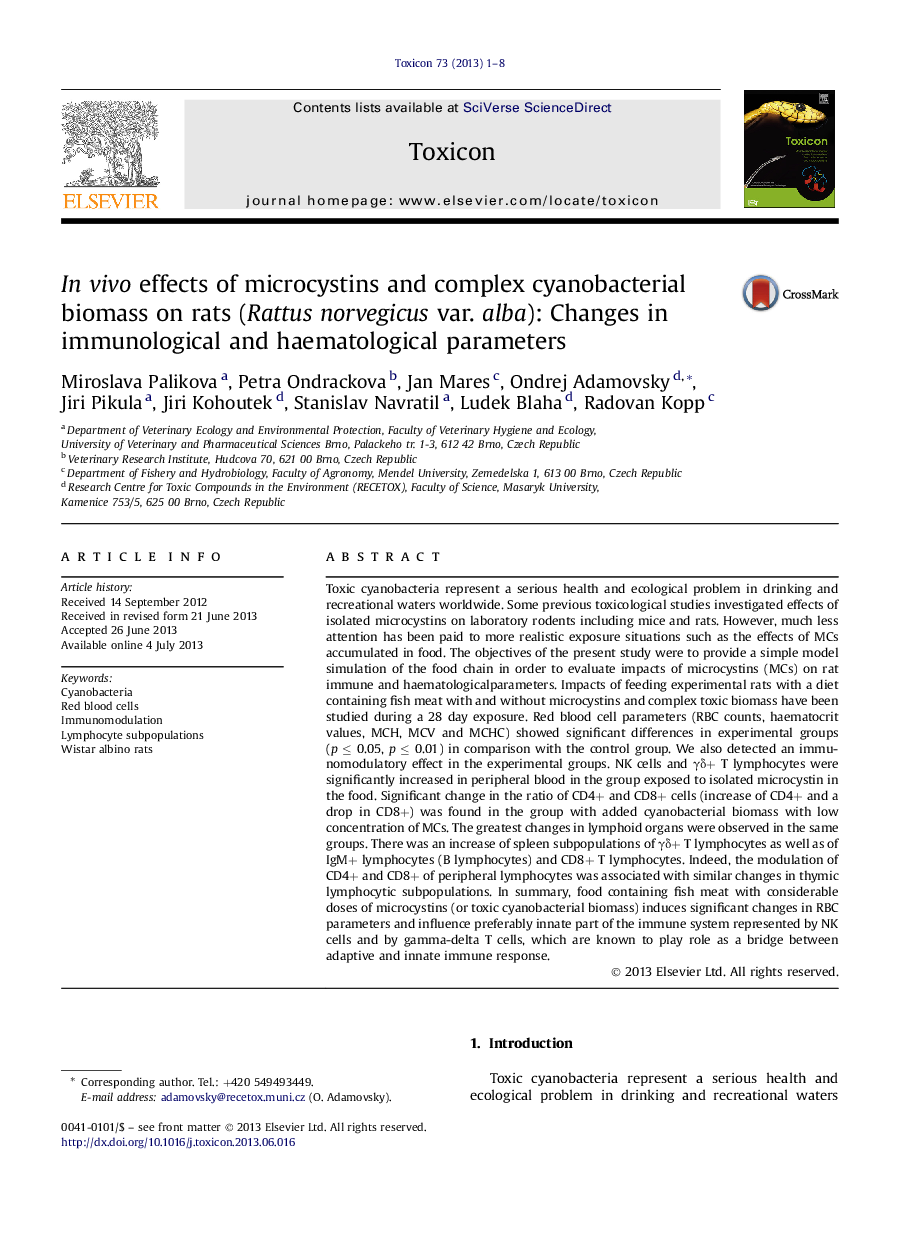| Article ID | Journal | Published Year | Pages | File Type |
|---|---|---|---|---|
| 8397262 | Toxicon | 2013 | 8 Pages |
Abstract
Toxic cyanobacteria represent a serious health and ecological problem in drinking and recreational waters worldwide. Some previous toxicological studies investigated effects of isolated microcystins on laboratory rodents including mice and rats. However, much less attention has been paid to more realistic exposure situations such as the effects of MCs accumulated in food. The objectives of the present study were to provide a simple model simulation of the food chain in order to evaluate impacts of microcystins (MCs) on rat immune and haematologicalparameters. Impacts of feeding experimental rats with a diet containing fish meat with and without microcystins and complex toxic biomass have been studied during a 28 day exposure. Red blood cell parameters (RBC counts, haematocrit values, MCH, MCV and MCHC) showed significant differences in experimental groups (p â¤Â 0.05, p â¤Â 0.01) in comparison with the control group. We also detected an immunomodulatory effect in the experimental groups. NK cells and γδ+ T lymphocytes were significantly increased in peripheral blood in the group exposed to isolated microcystin in the food. Significant change in the ratio of CD4+ and CD8+ cells (increase of CD4+ and a drop in CD8+) was found in the group with added cyanobacterial biomass with low concentration of MCs. The greatest changes in lymphoid organs were observed in the same groups. There was an increase of spleen subpopulations of γδ+ T lymphocytes as well as of IgM+ lymphocytes (B lymphocytes) and CD8+ T lymphocytes. Indeed, the modulation of CD4+ and CD8+ of peripheral lymphocytes was associated with similar changes in thymic lymphocytic subpopulations. In summary, food containing fish meat with considerable doses of microcystins (or toxic cyanobacterial biomass) induces significant changes in RBC parameters and influence preferably innate part of the immune system represented by NK cells and by gamma-delta T cells, which are known to play role as a bridge between adaptive and innate immune response.
Related Topics
Life Sciences
Biochemistry, Genetics and Molecular Biology
Biochemistry, Genetics and Molecular Biology (General)
Authors
Miroslava Palikova, Petra Ondrackova, Jan Mares, Ondrej Adamovsky, Jiri Pikula, Jiri Kohoutek, Stanislav Navratil, Ludek Blaha, Radovan Kopp,
